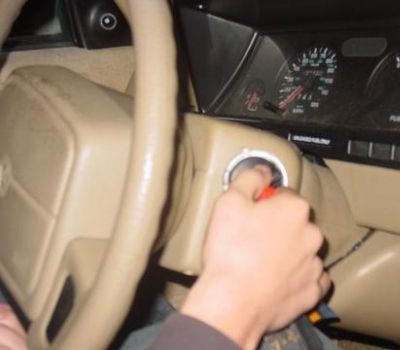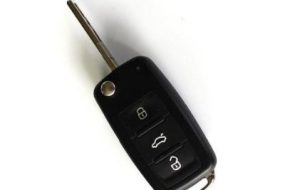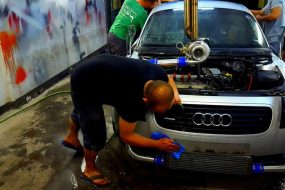
Spark plugs, though little, are vital in the ignition of your car’s engine. If the spark plugs are not working properly, you will notice some problems in starting your car. In this article, we consider the methods you can employ in starting a car with bad spark plugs.
How to Start a Car with Bad Spark Plugs
If you encounter bad spark plugs in your car, here are a few ways you start the car:
1. Gap the Spark Plugs
The gap we talk about here is the opening between the ground and the center electrode. It is important to gap the spark plugs so that electrons from the combustion cylinder can be transmitted with ease.
When the spark plugs are not appropriately gapped, it leads to the hesitation of the engine, reduced acceleration power, and rough idling.
Moreso, the gap has to be the normal and proper width. If it is too wide or too narrow, your engine might misfire. That will make it difficult for the car to start.
It is important for you to get an accurate measurement of the gap to be installed, the recommended distance is stated in the owner’s manual. Check it to know the distance you should use in creating the gap between the electrodes.
When you know the gap to use, you can make use of a feeler gauge to measure the current distance. The gap gauge is able to pass through a wide spark plug more easily than a narrow spark plug.
Afterward, you need to get a spark plug tool. Use it to bend the side electrode inwards if the opening is too large. Bend the side electrode outwards if the opening is too small. Do it gently. Now, you can install your spark plug and switch on the engine.
2. Clear The Residue of Oil and Carbon
As you know already, a spark plug converts the compressed mixture of fuel into the required power your car needs to be able to start. Combustion is needed for this mixture to be ignited; these combustions take place on the electrodes of the spark plugs.
With time, it is possible for oil and carbon to build upon the electrodes of the spark plug. It makes the car difficult to start because there is an uneven transmission of electrodes.
Many things can cause oil and carbon to build upon the electrodes of a spark plug, including idling the engine for long periods, use of damaged fuel filters, etc.
Whenever you see back soot or ash on the electrodes of a spark plug, it means that there is oil and carbon buildup on it.
Carbon residue on the electrodes of the spark plugs will decrease the efficiency of the spark plugs, this is because electric currents will not be transmitted normally.
- To get rid of this residue, you need to scrub the affected area with a wire brush or sandpaper. This will help get rid of the carbon.
- You can make use of a car cleaner to wash the area and spray away the dirt produced. Also, allow the spark plug to dry completely before you install it back.
Another method you can use in clearing the residue of oil and carbon is to burn the buildup with the aid of a butane torch or possibly a Sandblast. It forces the soot on the spark plug electrodes out. With this solution, you can start your car with a bad spark plug.
3. The Wire End of The Spark Plug Should Be Checked
If your car refuses to start, it is wise for you to check on the wire of the spark plug. The wire end of the spark plug is the end that links the ignition coil to the terminal of the vehicle.
If there is a weak cable connection to the spark plug, the power supply needed to start the car will be severely affected.
You need to ensure that the wire end of the spark plug is in good condition and connected so transmission of electrons will be complete.
Also, the spark plug needs to be separated from the plug boot. The plug boot is usually fitted to the spark plug so it might need a lot of lubrication for it to be dislodged with ease.
4. A Cracked Cylinder Head Should Be Sealed
A car with bad spark plugs can be started by sealing the cracked cylinder head. The position of the spark plug is on the cylinder head.
Recall that it is in the cylinder chamber that the mixture of fuel and air is ignited by a spark that passes through the electrodes of the spark plug.
With a cracked cylinder head, combustion will definitely be incomplete causing less ignition power to be produced. If the cylinder head is cracked, you will notice things like overheating of the engine, the presence of impurities in the oil, and the misfiring of the engine.
The solution to this is to seal the cracked cylinder head. You can make use of a sealant to properly seal the affected area. The sealant will close the routes the pressure escapes from and allows the fuel & air mixture to compress completely thus providing the required power your car’s engine needs to start.
5. Preheat the Spark Plugs
Electrodes of a spark plug can be affected by extremely cold temperatures. This condition hinders the production of power for the engine. If the currents from the electrons cannot be supplied efficiently, you will find it difficult to start your car.
Something you can do when your car refuses to start is to preheat the spark plug. You can place it in an oven for some minutes or you can make use of a heating torch to heat it up.
6. Replace the Spark Plugs
Some spark plugs might be damaged or faulty beyond repair. At this point, it is not recommended you spend money fixing it. It will be cost-effective for you to replace it and install the new set of spark plugs. Your vehicle will feel the effect and it will be much easier to start it.
Remember that a lot of things can happen if you don’t change your spark plugs. It’s not even expensive to purchase. So, changing it shouldn’t be a problem.
Dangers of Driving with Bad Spark Plugs
Driving with bad spark plugs can lead to numerous problems including misfiring of the engine, hard starts, rough idling, and lack of acceleration.
- Misfiring of the Engine: Bad spark plugs can make the car stop for a while and resume normally. It happens when you are driving. This stop-start-stop-start is unhealthy for the engine and can lead to permanent damage to the engine.
- Hard Starts: It is not uncommon to see that many cars cannot be ignited properly when the spark plugs are faulty.
- Lack of Acceleration: Driving with bad spark plugs is dangerous because, along the drive, you will notice difficulty in accelerating. Pressing on the throttle might be more difficult than you would experience normally.
- Reduced Engine Power: Your engine power will reduce once the spark plug stops working.
Conclusion
If you have bad spark plugs in your car, you should get them replaced as soon as possible because driving with bad spark plugs is harmful to your car’s engine.









